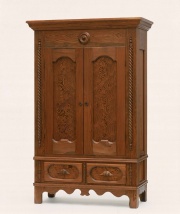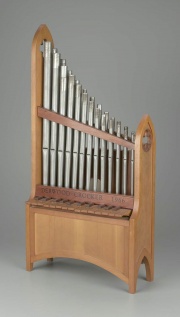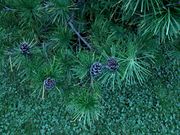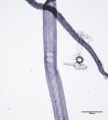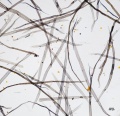Difference between revisions of "Pine"
| (One intermediate revision by the same user not shown) | |||
| Line 39: | Line 39: | ||
== Resources and Citation == | == Resources and Citation == | ||
* The Wood Database: [https://www.wood-database.com/pine-wood-an-overall-guide/ Pine wood an overall guide] | * The Wood Database: [https://www.wood-database.com/pine-wood-an-overall-guide/ Pine wood an overall guide] | ||
| − | |||
* Schoch, W., Heller, I., Schweingruber, F.H., Kienast, F., 2004:[http://www.woodanatomy.ch/ Wood anatomy of central European Species]: Common Pine,Scots Pine, [http://www.woodanatomy.ch/species.php?code=PISY Pinus silvestris L.] | * Schoch, W., Heller, I., Schweingruber, F.H., Kienast, F., 2004:[http://www.woodanatomy.ch/ Wood anatomy of central European Species]: Common Pine,Scots Pine, [http://www.woodanatomy.ch/species.php?code=PISY Pinus silvestris L.] | ||
| − | |||
* F. H. Titmuss, ''Commercial Timbers of the World'', The Technical Press Ltd., London, 1965 | * F. H. Titmuss, ''Commercial Timbers of the World'', The Technical Press Ltd., London, 1965 | ||
| − | |||
* ''Dictionary of Building Preservation'', Ward Bucher, ed., John Wiley & Sons, Inc., New York City, 1996 | * ''Dictionary of Building Preservation'', Ward Bucher, ed., John Wiley & Sons, Inc., New York City, 1996 | ||
| − | |||
* ''Encyclopedia Britannica'', http://www.britannica.com Comment: "Pine." Accessed: 14 July 2004 | * ''Encyclopedia Britannica'', http://www.britannica.com Comment: "Pine." Accessed: 14 July 2004 | ||
| − | + | * Wikipedia: [https://en.wikipedia.org/wiki/Pine Pine] (Accessed Nov. 9, 2005 and October 2024) | |
| − | * Wikipedia: | ||
| − | |||
* R. J. Gettens, G.L. Stout, ''Painting Materials, A Short Encyclopaedia'', Dover Publications, New York, 1966 | * R. J. Gettens, G.L. Stout, ''Painting Materials, A Short Encyclopaedia'', Dover Publications, New York, 1966 | ||
| − | |||
* G.S.Brady, ''Materials Handbook'', McGraw-Hill Book Co., New York, 1971 Comment: p. 612 | * G.S.Brady, ''Materials Handbook'', McGraw-Hill Book Co., New York, 1971 Comment: p. 612 | ||
| − | |||
* Museum of Japanese Traditional Art Crafts at http://www.nihon-kogeikai.com/ (Jap. term) | * Museum of Japanese Traditional Art Crafts at http://www.nihon-kogeikai.com/ (Jap. term) | ||
| − | |||
* Marja-Sisko Ilvessalo-Pfäffli. ''Fiber Atlas: Identification of Papermaking Fibers'' (Springer Series in Wood Science). Springer, 1995. | * Marja-Sisko Ilvessalo-Pfäffli. ''Fiber Atlas: Identification of Papermaking Fibers'' (Springer Series in Wood Science). Springer, 1995. | ||
| + | * Walter Rantanen. "Fiber ID Course." Integrated Paper Services. June 2013. Lecture. | ||
| − | + | [[Category:Materials database]][[Category:MWG]][[Category: Wood]] | |
| − | [[Category:Materials database]] | ||
Latest revision as of 11:53, 3 October 2024
Description
Any of several evergreen trees of the genus Pinus. Pine trees are widely spread throughout the temperate regions of the northern hemisphere. They are fast growing and typical sizes for range from 15-45m. These evergreen trees have clustered needles (adult leaves) that can persist for 1.5-40 years. Cones can range in size from 3-60 cm depending on species. Pine wood is soft, easy to work and has little shrinkage. It is moderately resistant to decay and insect attack. Common uses for the lumber are furniture, window frames, floors and roofing. The wood pulp is used to make kraft paper, paper board, and book paper. Pine trees have a resinous sap which is used to make turpentine and pine tar.
- There are three principal species of soft pine: Sugar pine (Pinus lambertiana), Western white pine (Pinus monticola), Eastern white pine (Pinus strobus)
- The first group of hard pines are the Southern Yellow pines: Shortleaf pine (Pinus echinata), Slash pine (Pinus elliotti), Longleaf pine (Pinus palustris), Loblolly pine (Pinus taeda), Pitch pine (Pinus rigida)
- The second group of hard pines are the Western Yellow pines: Lodgepole pine (Pinus contorta), Ponderosa pine (Pinus ponderosa), Jeffrey pine (Pinus jeffreyi)
- Other record for pines include: Aleppo pine, Bristlecone pine, Hoop pine, Monterey pine, Scotch pine, Yellow pine.
- See also [Uemera Dye Archive (Kuromatsu)]
Synonyms and Related Terms
Pinus; fyr-slægten (Dan.); Kiefern (Deut.); Föhren (Deut.); pino (Esp., It.); pin (Fr.); den (Ned.); furu (Nor.); sosna (Pol.); pinho (Port.); tallar (Sven.); matsu (Jap.)
Physical and Chemical Properties
- Wide range of tree heights from 3-80m
- Bark = thick and scaly
- Leaves = needles on adult trees bundled in clusters, generally 2 to 5.
- Yellow powdery pollen is released in the spring or early summer.
- Density = 25-35 ppcf
Paper fiber type: Softwood. Using transmitted light microscopy, pine fibers are identified by the presence of pinoid or fenestriform pits. Hard pines can be distinguished by the presence of dentate ray tracheids. See individual species for specific morphological characteristics. Appearance with Graff "C" stain: varies with pulping and bleaching. Average dimensions of fibers: varies by species. Common pulping method: kraft and sulfite.
Additional Images
Resources and Citation
- The Wood Database: Pine wood an overall guide
- Schoch, W., Heller, I., Schweingruber, F.H., Kienast, F., 2004:Wood anatomy of central European Species: Common Pine,Scots Pine, Pinus silvestris L.
- F. H. Titmuss, Commercial Timbers of the World, The Technical Press Ltd., London, 1965
- Dictionary of Building Preservation, Ward Bucher, ed., John Wiley & Sons, Inc., New York City, 1996
- Encyclopedia Britannica, http://www.britannica.com Comment: "Pine." Accessed: 14 July 2004
- Wikipedia: Pine (Accessed Nov. 9, 2005 and October 2024)
- R. J. Gettens, G.L. Stout, Painting Materials, A Short Encyclopaedia, Dover Publications, New York, 1966
- G.S.Brady, Materials Handbook, McGraw-Hill Book Co., New York, 1971 Comment: p. 612
- Museum of Japanese Traditional Art Crafts at http://www.nihon-kogeikai.com/ (Jap. term)
- Marja-Sisko Ilvessalo-Pfäffli. Fiber Atlas: Identification of Papermaking Fibers (Springer Series in Wood Science). Springer, 1995.
- Walter Rantanen. "Fiber ID Course." Integrated Paper Services. June 2013. Lecture.
